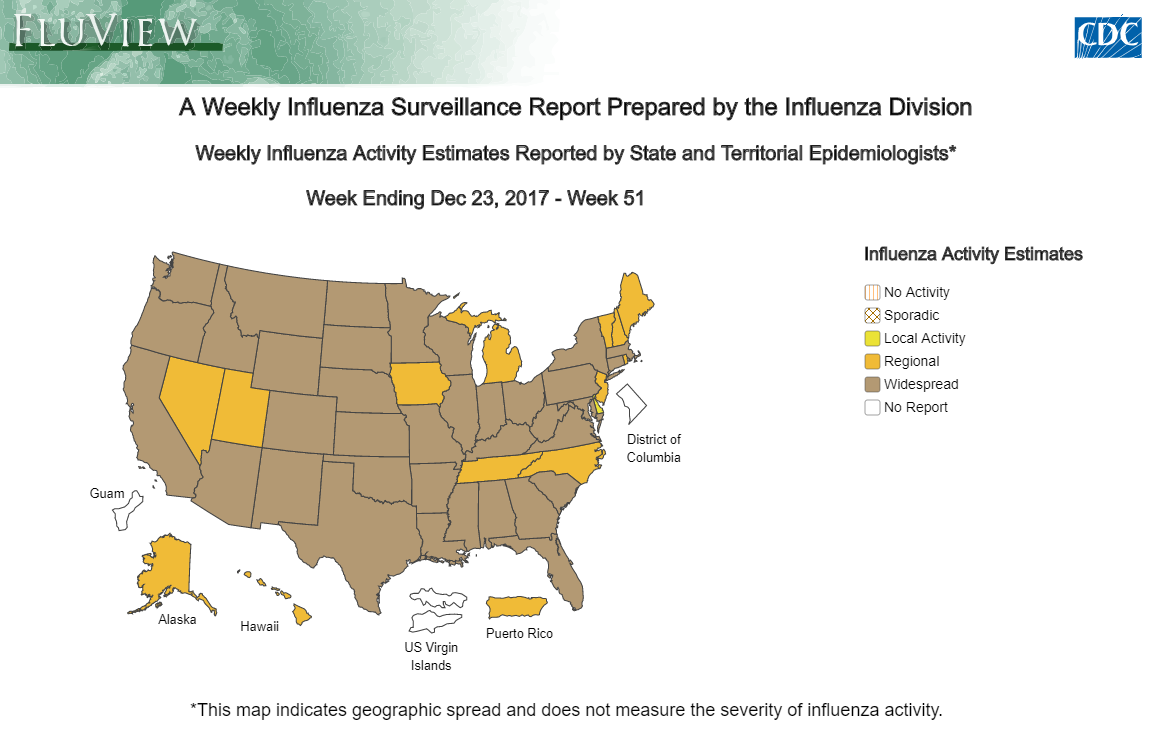Every year, the United States experiences the start of flu season in fall and winter, with the peak of the season occurring anywhere from late November through March. While the impact of the influenza virus varies from person to person, the Center for Disease Control and Prevention (CDC) estimates there have been between 9.2 and 35.6 million illnesses since 2010, with 140,000 to 710,000 hospitalizations and 12,000 and 56,000 deaths. Recently, there have been indications this year’s flu season may be more severe than years past, with the dominant influenza strain Influenza A (H3N2).
To summarize, flu season is upon us and is likely to be worse than years past. Lovely.
But fear not! There are multiple ways to combat this potentially nasty virus from affecting you and the ones you love. The Center for Disease Control and Prevention (CDC) recommends a yearly flu vaccine for everyone 6 months and older as the best preventative care, but you can also stay informed regarding alternative forms of preventative care and warning symptoms to help avoid spreading the unpleasant plague. Things to remember for this year’s flu season:
What are symptoms of the flu?
The onset of symptoms generally begin about one to four days after exposure and include the following:
- Fever or feeling feverish/chills
- Cough
- Sore throat
- Runny or stuffy nose
- Muscle or body aches
- Headaches
- Fatigue (very tired)
- Vomiting and diarrhea, though this is more common in young children than in adults
But how exactly does it spread?
- By touching a surface/object that has been contaminated with the flu virus (think handrails, doorknobs, etc.), and subsequently touching one own’s mouth/nose/eyes
- Contact with an infected person, where infected secretions land in the mouth/nose of the nearby people (passed by coughing, sneezing, and talking)
What can you do to prevent the flu and keep it from spreading?
- Avoid contact with people who are sick (sorry gals, no Bachelor screening at my place this week!)
- Wash your hands
- Get the flu vaccination
- Cover coughs and sneezes (preferably with sleeves or tissues)
- Regularly sanitize high-traffic surfaces
- Stay home if you are sick!
The flu shot: who, what, where, when, and why?
- Who: You and your loved ones.
- What: This season, only injectable flu vaccines are recommended (shots)!
- Where: Offered at many clinics, health departments, pharmacies, college health centers, doctor’s offices, and sometimes even employers and schools!
- When: By the end of October if possible, but being vaccinated later is still beneficial. The body immune response takes roughly two weeks to fully respond and to be protected.
- Why: The flu is unpleasant to say the least and complications from it are even worse.
While the flu is prevalent, it is still preventable. Take action to protect yourself and loved ones from this potentially dangerous virus by staying informed: find out where you can get vaccinated, follow preventative measures like washing your hands, and avoid contact with infected people. And if all else fails and you become infected, stay home and binge watch Netflix for at least 24 hours after your fever is gone!





No Comment